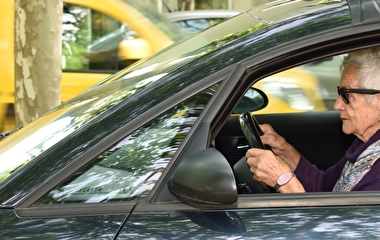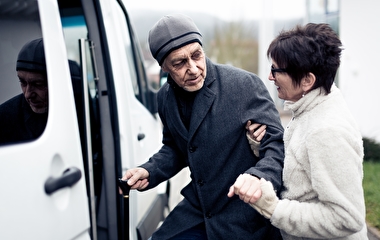
In the US, we often associate bicycles with transportation, exercise, and environmental benefits. Yet worldwide, the bicycle has even greater potential: the power to address pressing global issues such as poverty, gender inequality, and access to health care and education. To leverage these benefits, thousands of stakeholders in the bicycles-for-development social movement are distributing bicycles to marginalized populations.
In a CTS webinar, U of M researcher Mitchell McSweeney joined Janet Otte, a Uganda-based research leader with Bicycles for Development, to discuss the opportunities, challenges, and unintended consequences that bicycles-for-development may hold for rural communities in Northern Uganda and beyond.
The webinar was held as part of CTS’s Rural Needs, Statewide Answers: Improving Transportation for All thematic focus for 2024. “With this conversation, we’re expanding that theme and examining international answers and input as well,” said CTS director Kyle Shelton in his introduction.
McSweeney and Otte’s research ties into the United Nations’ keen interest in promoting the bicycle to support sustainable development goals, including no poverty, zero hunger, good health, gender equality, affordable and clean energy, decent work, and sustainable communities. The research project began in 2017, focusing on Uganda, Nicaragua, and Canada and examining the development roles bicycles play in disadvantaged communities.
“We wanted to know how bicycles actually enter, move within, and leave these communities and what, if anything, challenges this movement,” explained McSweeney, an assistant professor of sport management in the School of Kinesiology.
The project was conducted in multiple phases, including global mapping, executive interviews, and on-the-ground fieldwork through a partnership with Union of Hope, a community-based organization that provides bicycles to women living with HIV in rural areas of Northern Uganda. In the project’s first year, researchers looked at who was doing bicycles-for-development work and mapped the flow of funding and bikes around the world.
“We found the majority of organizations were created in the United States, Canada, Australia, and the United Kingdom, with the bulk of bicycles distributed in regions of Africa, Central America, and South Asia, and that the program goals varied by organization and location,” McSweeney said.
Next, the research team conducted interviews with individuals from bicycles-for-development organizations. The interviews revealed the importance of providing bikes suited to the local conditions, ensuring affordable replacement parts were available for bikes, and understanding the impact of government regulations. “For example, import and export taxes in certain locations made it difficult to get more bicycles to target locations,” Otte said.
In the field work portion of the project, women with HIV in rural Uganda received bikes and collected data for the study using photos, photovoice, digital storytelling, and photo collaging.
Key findings showed that the bicycle is a transportation tool that can support health care, livelihood activity, education, travel to markets, household chores, and community and recreational events. In addition, the bicycle promoted women’s agency, self-organization, and livelihoods.
“We found that women were self-organizing and self-governing in bicycle savings groups that were saving specific amounts of money on a weekly or bi-weekly basis and distributing that money annually or biannually among members, including the distribution of money as micro-loans that were repaid at a low interest rate,” McSweeney said.
Not only did these groups provide financial support for the women, they also provided an important community. “The bicycle saving groups were a space where women’s issues could be openly discussed and help could be requested, whether in regard to their families, the community, or their HIV status,” Otte added. “There is a lot of stigma regarding HIV, especially in the rural areas, and the power of the group helped demystify that.”
On the flip side, researchers found that providing bicycles to women and girls may create unintended consequences: Some women talked about how the bicycle would be used by the husband when he wanted to use it, and others said it made completing domestic duties more efficient, leading them to take on additional responsibilities as income providers.
To make bicycles-for-development programs more effective, researchers provided several recommendations based on their findings. First, they suggest a tax waiver for bicycles and bicycle parts be given to priority groups such as women and people with disabilities to increase bicycle access in Northern Uganda and other rural areas. Additional recommendations include establishing bicycle repair workshops, developing the road network to improve bicycle infrastructure, becoming more aware of unintended consequences of bicycle-for-development programs, and exploring the health benefits of cycling for individuals with HIV.
—Megan Tsai, contributing writer


